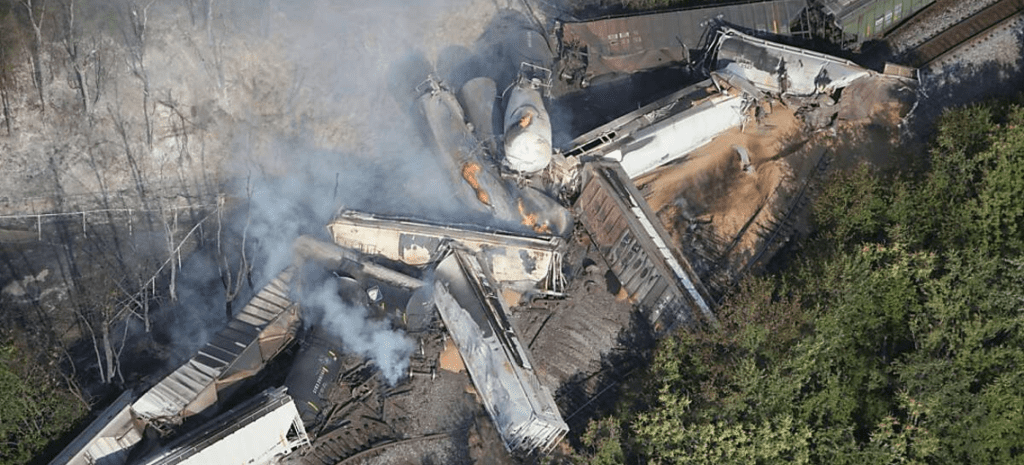The Most Pressing Environmental Issues That Affect Our Health Condition

There are many environmental issues that people are concerned about today, but what are some of the most pressing and widely discussed problems every one of us on this planet shall pay very close attention to:
Environmental Issues
1. Climate Change:
This is one of the biggest environmental concerns of our time, with rising global temperatures, changing weather patterns, and sea levels posing significant risks to human health and the planet. Increased frequency of extreme weather events: Climate change is leading to an increase in the frequency and severity of extreme weather events such as hurricanes, floods, and droughts, which can cause damage to water treatment facilities and contaminate drinking water sources. For example, Hurricane Maria in 2017 caused widespread damage to water treatment facilities in Puerto Rico, leading to a major drinking water crisis on the island.
Climate change is causing changes in precipitation patterns, which can lead to water scarcity in some regions and an increased risk of water contamination in others. Another example has happened in California, prolonged drought conditions in recent years have led to water scarcity and a higher risk of contamination of drinking water sources.
Higher temperatures can increase the risk of water-borne diseases and the growth of harmful algae and bacteria in water sources, making them unsafe for human consumption. In some parts of the world, warmer temperatures have led to the growth of harmful algae in lakes and reservoirs, leading to the contamination of drinking water sources and the issuance of “do not drink” orders.
In coastal regions, sea level rise due to climate change is causing saltwater intrusion into freshwater aquifers sea level rise has been a problem, leading to increased levels of salinity in drinking water and making it unsuitable for consumption.
Climate change can impact the chemical and biological characteristics of water sources, leading to changes in water quality that can make it unsafe for drinking.
2. Biodiversity Loss:
The rapid loss of species and habitats is another critical concern, as it undermines the stability of ecosystems and the services they provide to humanity. Climate change is driving changes in land use, such as deforestation and urbanization, which can increase runoff and lead to water pollution, affecting the quality of drinking water. For example, urbanization and deforestation can lead to increased runoff and pollution of water sources, affecting the quality of drinking water. For instance, in some cities, the heavy use of pesticides and fertilizers has led to increased levels of nitrogen and phosphorus in water sources, making it unsafe for drinking.
3. Plastic Pollution:
The proliferation of plastic waste in the ocean and on land is a major problem, with plastic particles entering the food chain and posing a threat to wildlife and human health.
4. Deforestation:
Deforestation is a key driver of biodiversity loss and is also contributing to climate change by releasing carbon into the atmosphere. Trees play an important role in reducing runoff and preventing soil erosion. When forests are cleared, rainwater can wash away the topsoil, carrying with it sediment, nutrients, and pollutants into rivers, lakes, and other water sources, making them unsuitable for drinking.
Deforestation can also alter the water balance in a watershed, leading to changes in water flow and water quality. For example, when forests are cleared, the amount of water available for human use may decrease, while the number of pollutants entering water sources may increase.
Trees and forests play an important role in filtering pollutants from water. Scientists discovered that deforestation can also reduce the natural filtration of pollutants, leading to increased levels of contaminants in water sources and making them unsafe for drinking. For instance, in the Amazon rainforest of Brazil, deforestation has led to increased levels of sediment in rivers and streams, reducing water quality and making it more difficult to treat for human consumption. Deforestation in the area has also reduced the availability of water for human use and increased the risk of water-borne diseases in some communities.
5. Air Pollution:
Poor air quality is linked to a range of health problems, from respiratory illness to heart disease, and is also contributing to global warming. In areas with acid rain, the acidity of water sources has increased, leading to changes in water quality and making it unsafe for drinking. Airborne pollutants can settle on the ground and into bodies of water, contaminating water sources and making them unsafe for drinking. For example, pollutants such as nitrogen and sulfur oxides from industrial activities and transportation can contaminate water sources and make them acidic, affecting water quality and making it unsafe for human consumption.
Air pollutants can react with other substances in the environment to form toxic compounds, which can then contaminate water sources. For example, nitrogen oxides and volatile organic compounds (VOCs) can react to form nitrogenous compounds, which can be harmful to aquatic life and humans if ingested. Groundwater can also be contaminated by air pollutants. For example, volatile organic compounds can penetrate into the ground and contaminate groundwater, making it unsafe for drinking.
in many cities around the world, air pollution from industrial activities and transportation has led to increased levels of nitrogen and other pollutants in water sources, making them unsafe for drinking. In some cases, drinking water treatment plants have had to be shut down temporarily due to high levels of pollution, leading to water shortages and other public health concerns.
As populations grow and demand for water resources increases, water scarcity is becoming a critical issue in many regions around the world. Trees surrounding us play an important role in retaining water, releasing it gradually into the environment. Deforestation can reduce the amount of water retention that is available for human use, leading to water scarcity in some areas and making it more difficult to maintain water quality.
It’s clear that there are many interrelated environmental challenges facing humanity today and addressing them will require a concerted effort from individuals, communities, governments, and businesses. It’s also important to take note that these impacts can vary depending on the region, and some areas may be more vulnerable to drinking water quality impacts from climate change than others. To address these challenges, it’s important to invest in infrastructure to improve water treatment and distribution systems and to implement adaptation strategies to minimize the risks posed by a changing climate. We, as human beings living on this earth, need to take action to minimize these risks and ensure that everyone has access to safe and clean drinking water.





